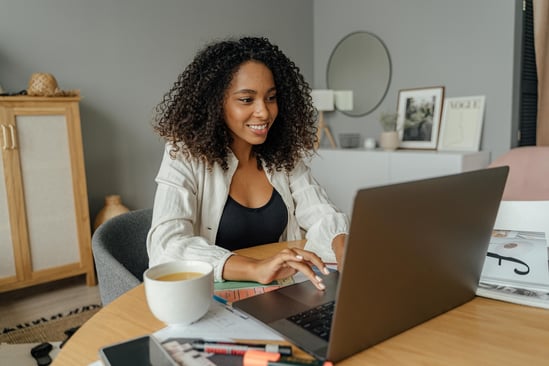Ethical AI in Ecommerce: Best Practices for Building Trust and Ensuring Transparency
Written By: Yvonne Bertovich
Calling all mindful ecommerce managers: You’re likely aware of the efficiency artificial intelligence (AI) in ecommerce can provide, leaving you and your teams more time for the fun stuff. AI churns the butter; you and your customers can just enjoy it on bread (and whatever else, no judgment).
But, mindful as you are, you likely have concerns about the safety and efficacy of AI.
Trying to give a blanket answer for what’s considered ethical and unethical, especially with technology, isn’t always plain and simple. Your cursor would be blinking forever, or you’d always have more to say.
To help with AI implementation, this post gives a foundational overview of using AI ethically within ecommerce and highlights the importance of transparency, fairness, and the customer experience.
Why Are Ethics in AI Important?
Ethics and technology don’t necessarily go hand-in-hand. Developers can’t always be held accountable, nor do they always have fully inclusive, fair, and ethical guidelines.
In other cases, implicit biases, incorrect information, and other issues might not be apparent until technology is applied in the wild.
In ecommerce, this can lead to discrimination, misuse of personal information, and, overall, poor business practices and performance. It puts your customers’ information, loyalty, and, truly, livelihoods at risk if AI technology is used improperly or irresponsibly.
The duty brands have to their customers, as well as their bottom line, is all the more important when implementing AI. Ethical AI, at the very least, also means implementing transparency, accountability, and non-discriminatory decision-making.
What Is Ethical AI? The Baseline
As a baseline, ethical AI in ecommerce means practicing transparency, accountability, and non-discriminatory decision-making.
- Transparency: For example, you make it clear to consumers when AI is involved in creating content or their experiences, and you’re clear with customers when AI is being used and interacts with them or their data.
- Accountability: If AI makes a mistake or causes a poor customer experience, your brand is held accountable to right the wrong — it doesn’t write it off as a technology error or blame the customer. Your brand also has clear and fair employee protections and AI policies.
- Non-discriminatory decision-making: For example, customers can opt out of sharing data with your business if that means it will be at the mercy of AI tools. Internally, your business doesn’t use AI that negatively impacts the safety or performance of your employees.
Ethical Considerations for AI in Ecommerce
Per SellersCommerce, “the volume of businesses adopting AI has grown by 270% since 2019.” With widespread implementation, here are a few top ethical considerations for AI in ecommerce to discuss with your team.
Data Privacy Risks
Though AI is a powerful tool to wrangle even your lengthiest or messiest data sets and asks, it’s not infallible. Humans and human checks are still crucial to your organization’s success.
Because of the sheer volume of data that AI can come into contact with, either from your organization or your customers, there’s unfortunately a risk of data leaks or breaches.
Information subject to leakage, breaches, or theft can include customers’ purchase history, browsing behavior, contact and payment details, and other sensitive information.
Algorithmic Bias and Discrimination
AI doesn’t have all the answers — and some of the information already ingrained in some AI systems can be riddled with algorithmic biases and discrimination (i.e., blanket assumptions or flat-out false information about certain customer groups, inequitable treatment, and so on).
As AI use is more widespread, these biases are increasingly coming to light and can be rectified. However, the risk remains for perpetuating false or harmful information.
Lack of Transparency
Not being clear about how your organization uses AI can lead to customer mistrust. For example, if a customer enters into a chat looking for answers or help and isn’t aware they’re talking to a virtual assistant, they can easily get turned off or frustrated. They also may not feel comfortable sharing certain details, in which a live agent should be tagged in.
Automation Risks
Though there are tons of brilliant examples of AI in ecommerce and how it can tackle repetitive tasks, there can be unintended consequences of automation.
For example, an over-reliance on AI can lead to job displacement or diminished personal interaction in customer service, negatively affecting the customer experience. An over-reliance on AI in content creation can lead to content that’s redundant, tone-deaf, boring, or just error-ridden.
5 Best Practices for Maintaining Customer Trust With AI
AI is an incredible tool when used responsibly. According to ecommerce and AI experts, you should leverage AI as a tool and thought partner for strategizing, not solely responsible for results. Here are some best practices for maintaining customer trust with AI.
1. Be Clear
There’s no such thing as TMI when it comes to AI implementation. Practicing transparency from the jump and clearly explaining how AI is used will help build and maintain customer trust.
For example, customers expect personalization. According to the “Ecommerce Pulse Report: Q2 2025” from Salsify and the Digital Shelf Institute (DSI), 39% of shoppers are driven to buy due to personalized discounts based on past purchases or browsing behavior. However, it’s important to explain how AI sources data and uses it for these personalization perks — and, again, giving customers the option to opt out of sharing their data.

2. Develop Ethically
If your team is developing or using AI in-house or outsourcing an AI tool to use in your business, it’s crucial to ensure your AI is ethical from inception.
For example, development is carefully reviewed by a team of living, breathing, rational, and caring humans to ensure fairness and accountability. It might mean more work up front, but there’ll be fewer headaches down the road.
3. Avoid Bias With Regular Audits
It’s important to run tests and understand use cases for how your organization will leverage AI to interact with different customer groups. You’ll either have to amend the algorithm or data or refrain from using AI in certain applications if there’s a risk of discrimination against your customers or your employees.
Running audits and tracking the right ecommerce AI key performance indicators (KPIs) also lend insight into how well the tools are performing (i.e., how much time and budget they’re saving or costing you).
4. Give Customers Control
Customers want options, and they want to feel and be in control when making purchase decisions. If they think something’s shady or off, they’ll take their business elsewhere.
Give customers control by making it easy for them to opt out of sharing data with your organization. Make it possible for them to erase their data when they’re no longer a customer or if they need to take a break.
5. Share Updates
The work to safeguard customer data never ends, and, again, there’s no such thing as TMI about these processes. Even if customers chronically glaze over your updates on privacy policies or related information, so be it — there will be customers who take it to heart that you have nothing to hide (besides sensitive data).
AI in Ecommerce: No Ethics, No Business
As AI transforms ecommerce, global brands must prioritize ethical implementation. Ecommerce managers should balance AI automation with human oversight to ensure transparency, fairness, and customer trust.
By developing clear ethical guidelines and monitoring AI for bias, brands can align technology with business goals while fostering accountability and protecting customer interests.
Becoming a Leader for AI in Ecommerce
Want the full picture of how AI is transforming ecommerce? Download our guide to explore practical strategies, expert insights, and real-world examples that will help your brand stay ahead of the curve.
DOWNLOAD NOWWritten by: Yvonne Bertovich
Yvonne Bertovich (she/her) is a senior content marketing specialist at Salsify, reporting from Tampa, Florida. With a longtime passion for research, she enjoys flexing her perspective on ecommerce, trends in consumer behavior, and health and wellness.
Recent Posts
What the Data Says About Consumer Interest in AI Shopping Agents
How Retailers Can Use Geolocation To Create Personalized Shopping Experiences
3 Examples of a Personalized Shopping Experience and How To Create Them
Subscribe to the Below the Fold Newsletter
Standing out on the digital shelf starts with access to the latest industry content. Subscribe to Below the Fold, our monthly content newsletter, and join other commerce leaders.

.svg)